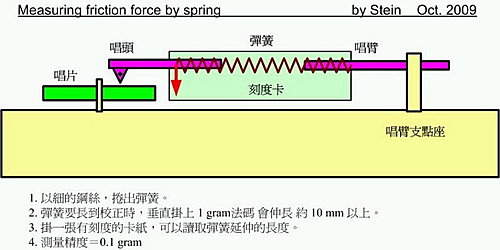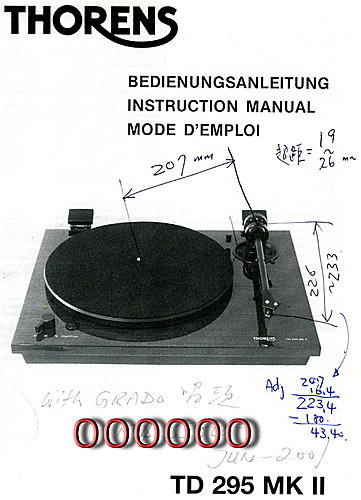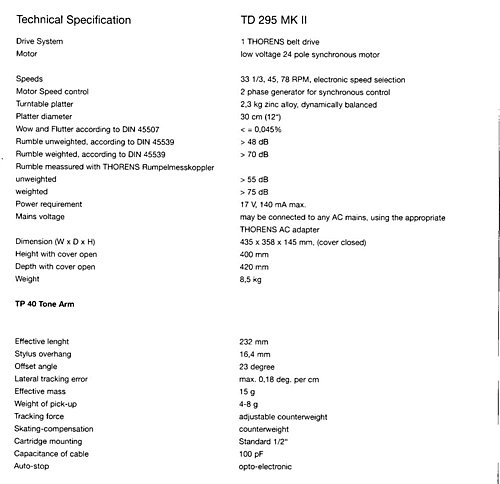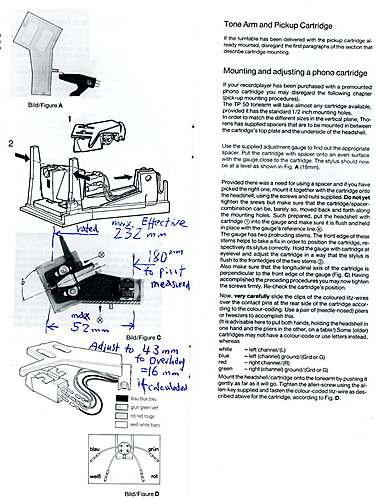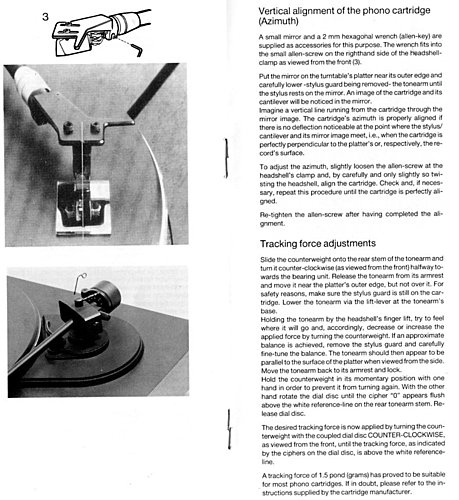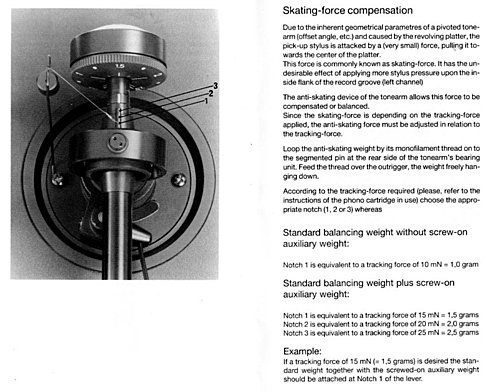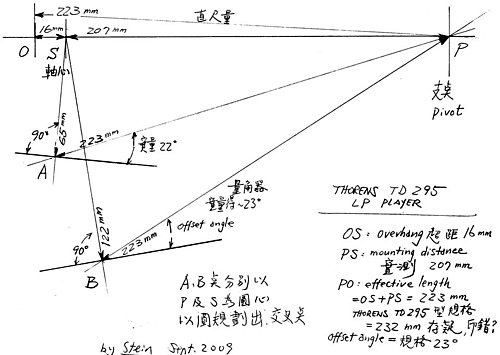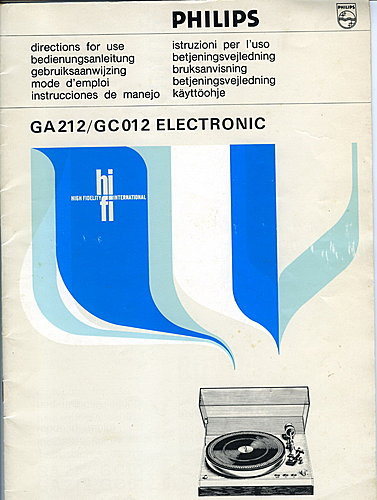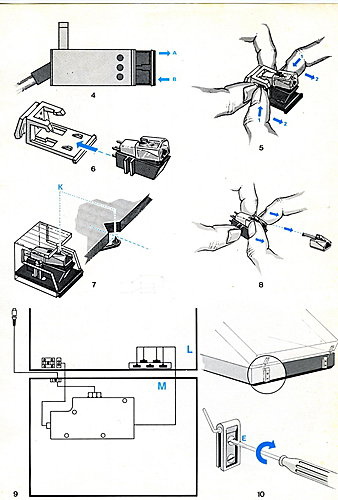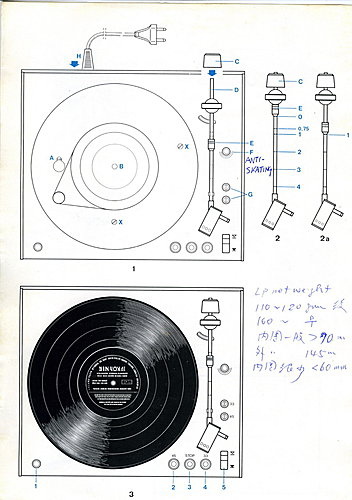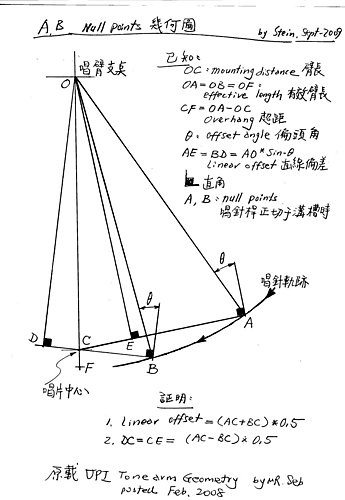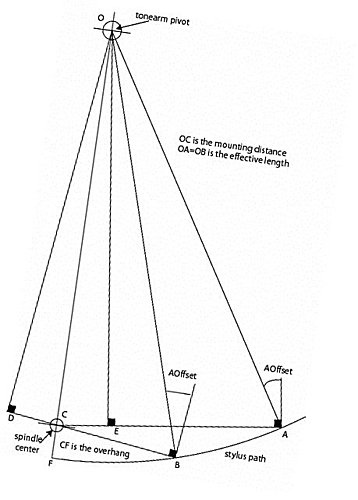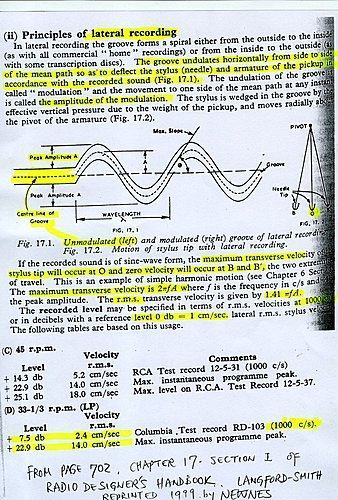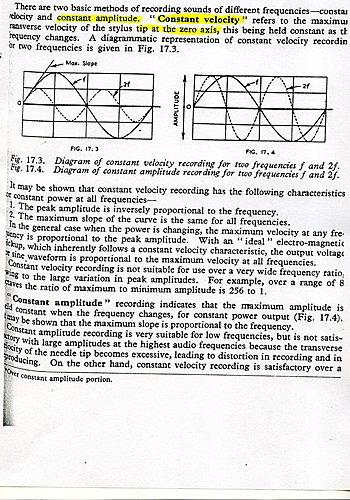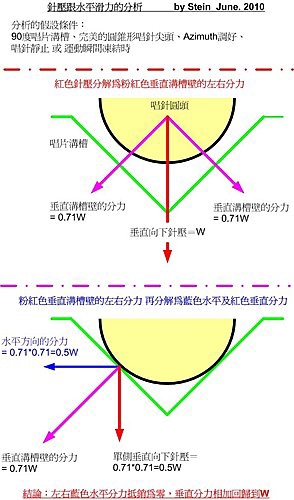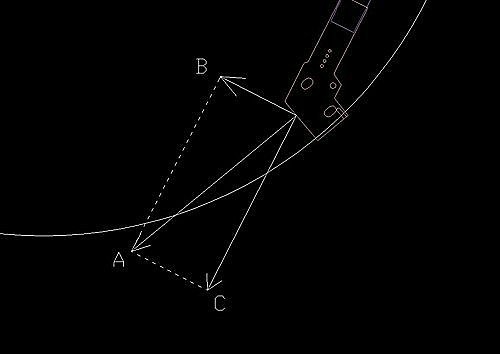Nov. 2009加註:
依照
http://www7a.biglobe.ne.jp/~yosh/recspecs.htm
摘錄以下說的,唱片溝槽實驗得到的磨擦係數是真正係數的1.41倍。
列如實驗得到的有效摩擦係數0.3相當理論上真正係數0.212.
這是因為溝槽V-45度分力引起的。
跟速度、針頭形狀關係也有列表在。
可查。
大致落在0.25-0.55(1979年JVC的實驗係數。這是有效實際牽引唱針的係數)。
Colin實驗測得係數0.38合理。
My Summary Note:
(下刪掉)
Anti-skating mechanism is problematic. It is rare that the anti-skating force will match side thrust force due to eventual friction forces. Some Thorens arms have 4 different scales for anti-skating: wet/dry x spherical/elliptical tip. The following graph shows imbalance of pressures on flank L/R for three representative designs of geometry (Stevenson/Baerwald/Loefgren) when anti-skating device is omitted (parameters: effective coefficient of stylus drag 0.3 and effective length of arm 231.2mm).
Note: theoretically the true coefficient of friction = 1/(SQRT(2) ) of the measured or empirical value since vertical stylus pressure is to be divided statically into VTF/(SQRT(2) ) each on groove flank. Then stylus drag force is [VTF/SQRT(2)]*2*coefficient of friction=VTF*SQRT(2)*coefficient of friction. This tricky calculation is based on armchair theories because the VTF cannot be actually divided evenly during stylus drag. Hence usually effective coefficient of stylus drag as empirical results is assumed to be theoretically equivalent to SQRT(2)*coefficient of friction. This coefficient of stylus drag 0.3 (coefficient of friction 0.212) for example is rather too small in comparison to the past investigations (coefficient of stylus drag 0.27-0.5 by Rangabe or 0.25-0.55 by JVC-1979 as shown in the following table).
Oct. 2009加註:
按照Colin試驗得到磨擦係數大約=0.38
有偏頭角的唱臂,會有內向的滑力 skating force,大小是唱針跟唱片之間的
摩擦力F乘sine 偏頭角。
而摩擦力=針壓*動摩擦係數。
動摩擦係數可能在0.3到0.7之間,確實多少找不到資料。
Colin先生做過實驗,想要測出摩擦力,下圖就是他的部分裝置,貼在網路上
http://tw.myblog.yahoo.com/colin-5687/article?mid=2386&prev=2410&next=2375&l=f&fid=20
我很佩服Colin先生的天才。
但是好像沒有看到下文。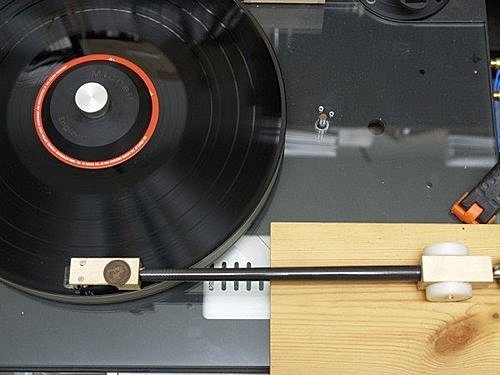
下圖虛紅線是我加上去的colin牽引線
因為車輪的靜摩擦力太大,沒有測到微小的唱針摩擦力。
聽Colin說:後來把車體稍微吊離平台,可以量個大約數字。

如果我接力的話,會像下圖一樣測試。
主要差別是先測出唱臂車載體的摩擦力扣而除之。
法碼可用竹牙籤,法碼盤可用包裝藥丸的小塑膠袋。
拿天平測一下0.1 gram相當幾支牙籤。
算是石器時代的實驗裝置。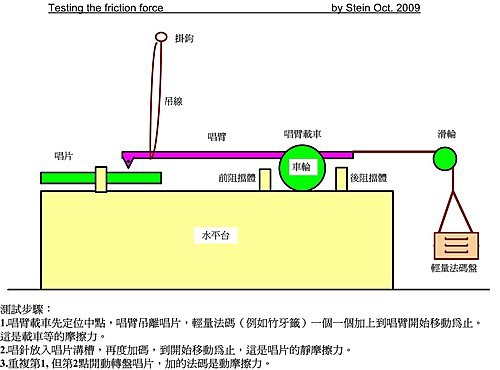
還有底下鐵器時代的作法,直接量測摩擦力。
